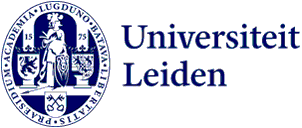
Leiden archaeologist investigates washed up plastics with National Geographic grant
Roberto Arciero is part of RESPIRE project (Research Educational and Storytelling Project in Italian Remote Ecosystem), an international and interdisciplinary research team led by Martina Capriotti (University of Camerino) that received the National Geographic Meridian grant. Among the different topics, the research project investigates plastic pollution in the Mediterranean, with a specific focus on two small Italian islands: Lampedusa and Pantelleria. 'These islands are closer to Africa than to Sicily.'
Disciplines
The project covers a wide range of disciplines, like biology, anthropology, botany, and sedimentology. Leiden researcher Roberto Arciero covers the archaeological part of the investigation. 'I will be studying the present from the perspective of an archaeologist,' Arciero explains. 'The plan is to collect plastic from three case studies beaches of Lampedusa and assess in an archaeological way what kind of plastic it is, and where it came from.'
At the same time, other researchers, such as Martina Capriotti (University of Camerino) Martina Genovese (Stazione Zoologica Anton Dohrn-Naples/University of Messina), and Ivan Martini (University of Siena), will investigate the microplastic presence and how these beaches formed. A preliminary survey done in November 2023 retrieved plastic objects both from Europe, as well as from North Africa, Arciero explains.

Inspiring a new generation
An important part of the project is to involve local youngsters. 'Students living on the islands will help with surveying the beaches and cataloging the plastic objects found. The aim is to inspire a new generation of young students.' The local people in general are heavily involved. 'We will discuss with them whether the plastic is just rubbish, or if it can tell us more about the contemporary past of the island. At the end of the project, we will select some objects for a travelling exhibition, telling the story of the islands through their plastic objects.'

Chronology and provenience of plastic pollution
Another goal is to create a chronology of plastic pollution that arrives on the beaches and a database of their provenience. While some objects can be difficult to date, for others this process can be more direct, as they may feature expiration dates, for example. Also, for some objects we can trace their provenience and the company that produced them. 'This pack of snacks was found at Cala Palme beach. It comes from Tunisia and is produced by Tom Company, which was the first biscuit factory in Tunisia, founded in 1949.'

Single-use package materials
Lampedusa is well-known for its location on migration routes from Africa to Europe. 'We certainly expect to find plastic left behind by migrants, but it is not the main focus of this investigation. Most of the plastics we already found are single-use package materials such as for yoghurt and couscous, for example. We do not expect the migrants to bring these on dangerous boat journeys.'

Raising awareness
'One of the purposes of the sub-project is to inform local policymakers about the types of plastic that end up on the island, as well as to raise awareness of the pollution in the sea.' This may help shape new policies for reducing certain objects that impact the island the most, particularly during summer.
